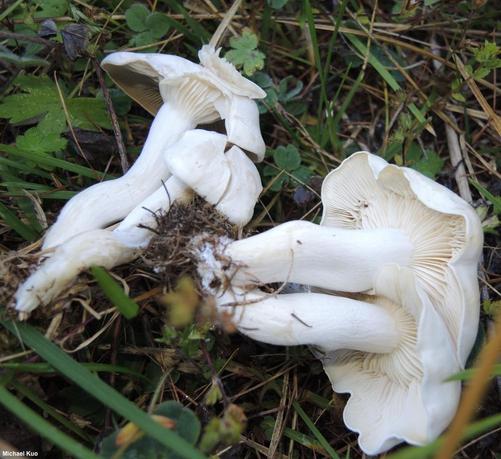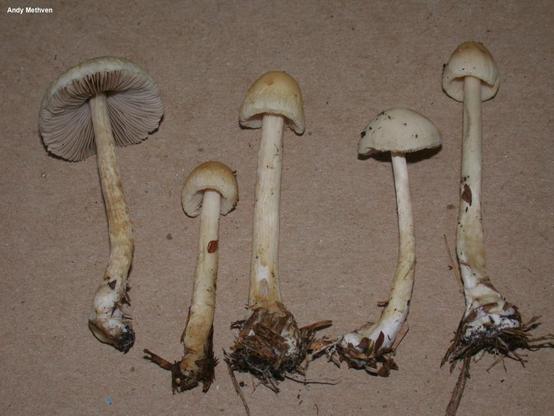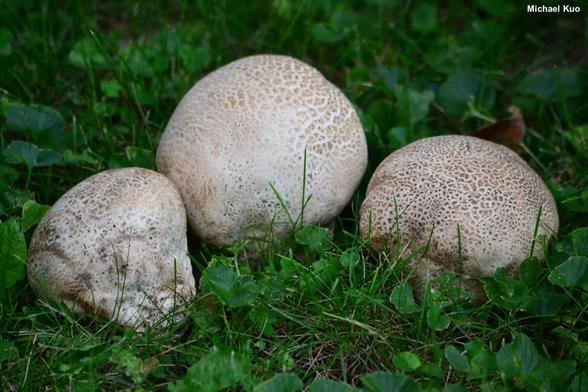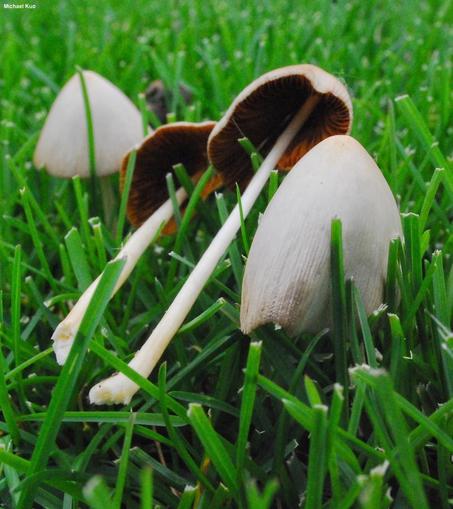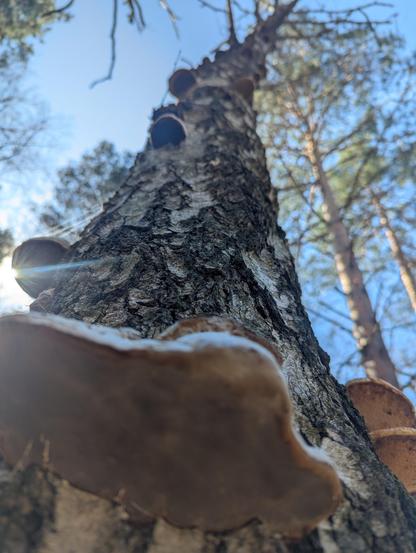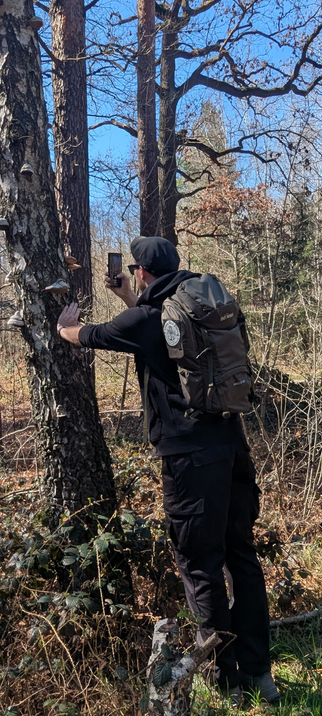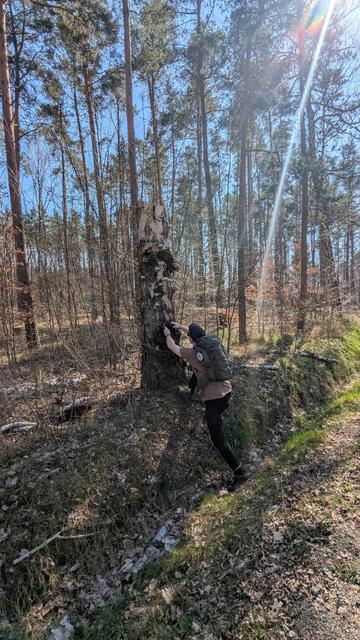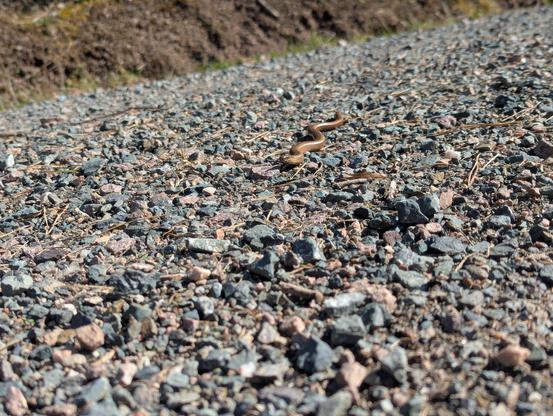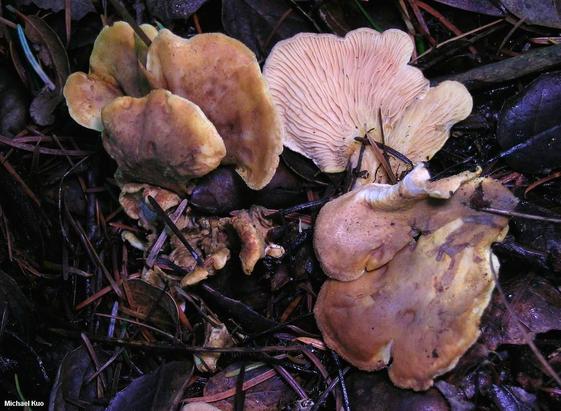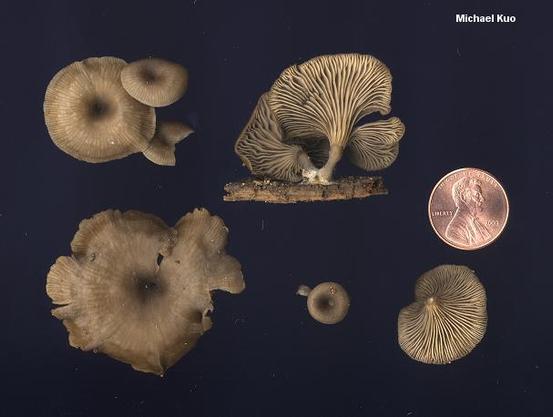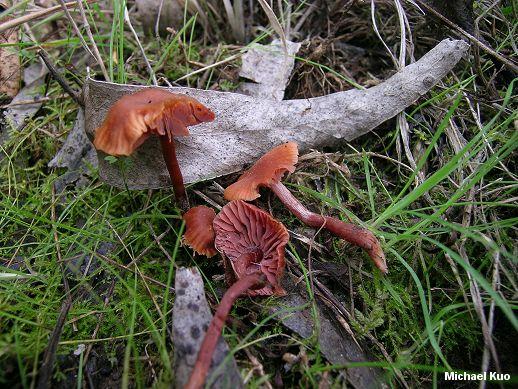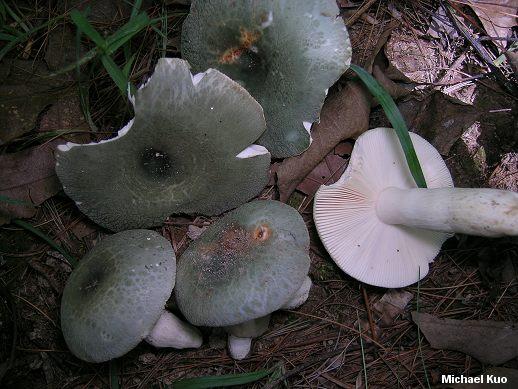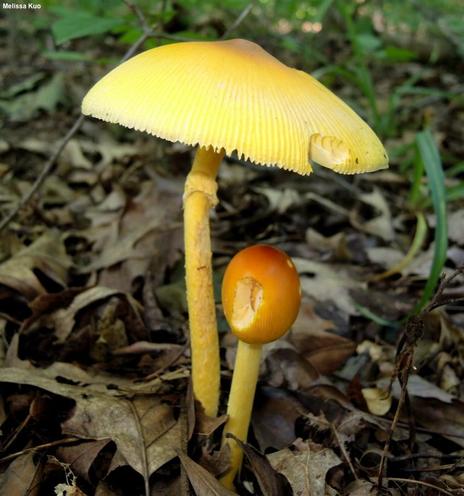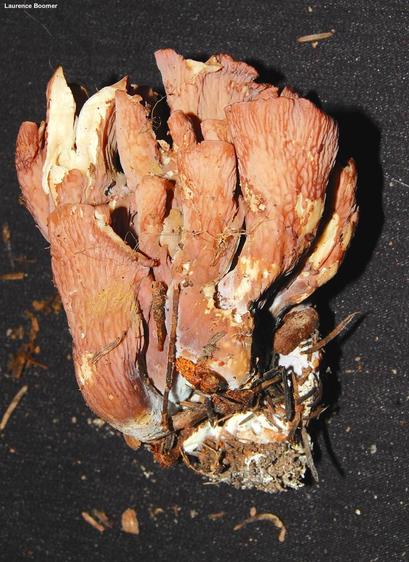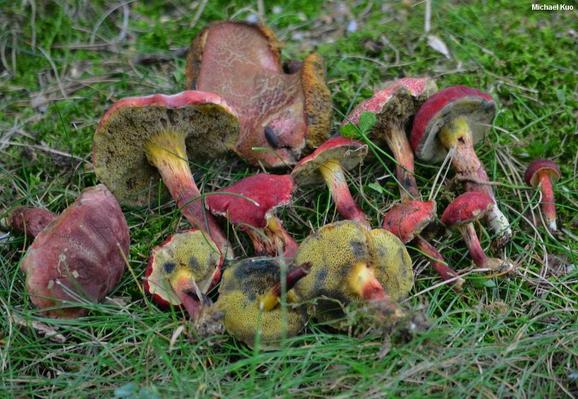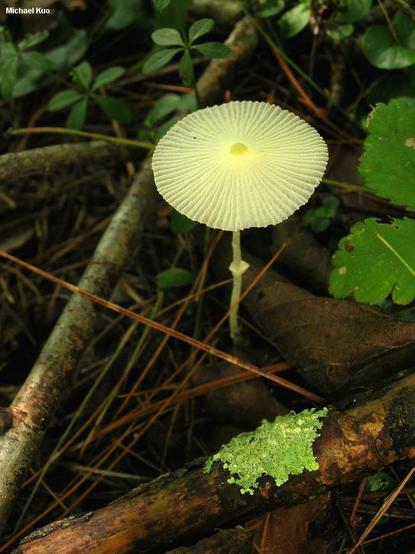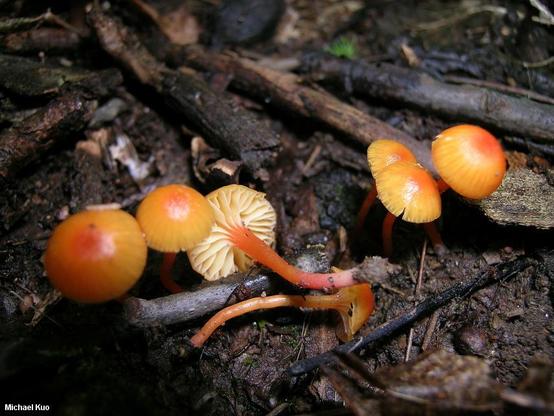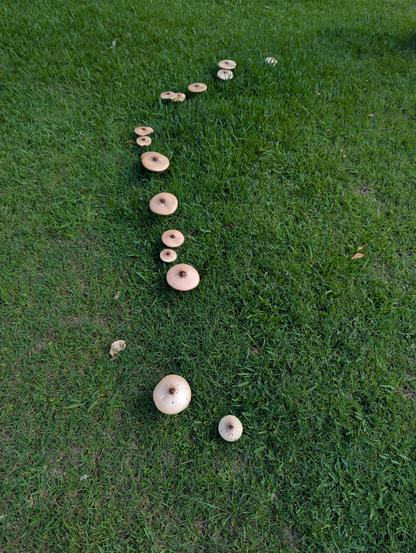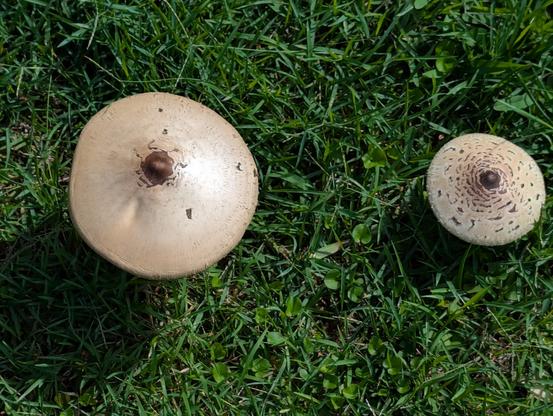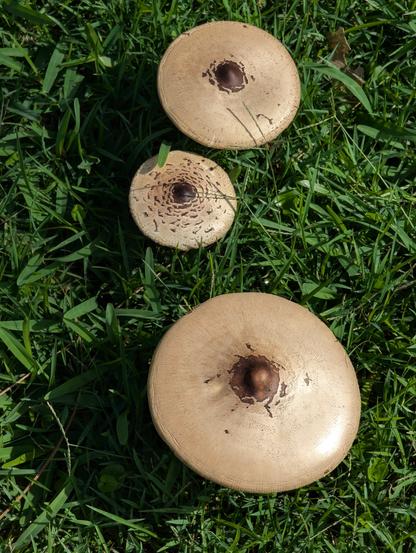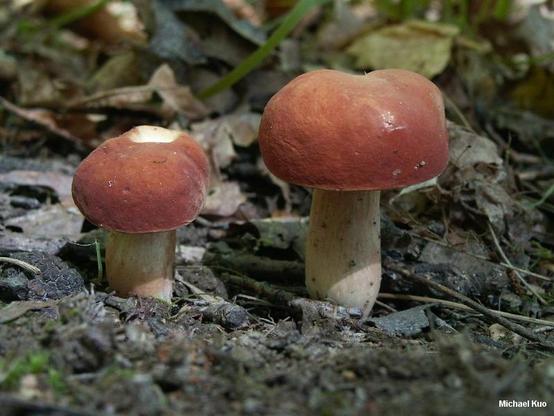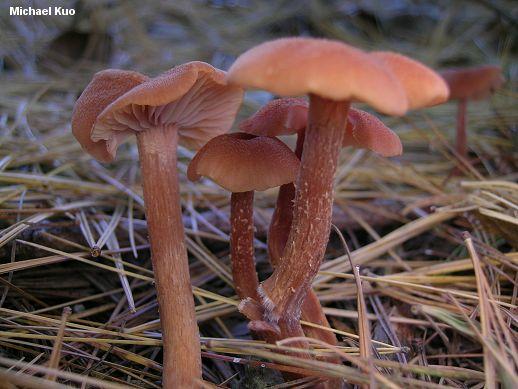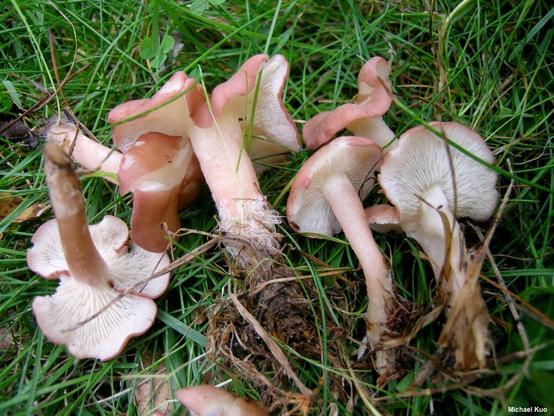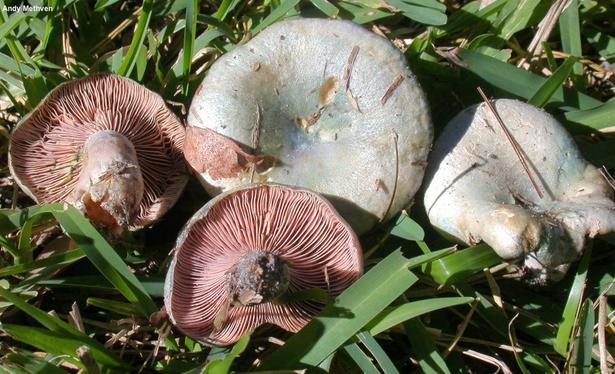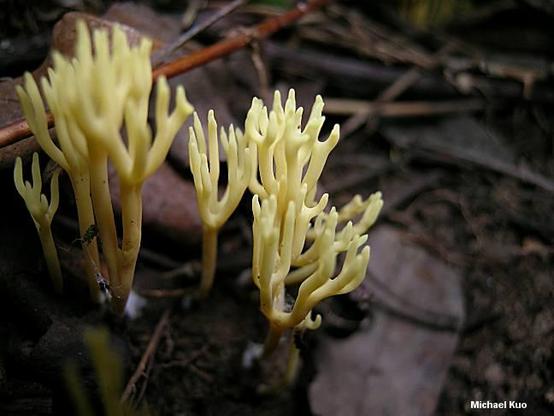Clitocybe densifolia
https://www.mushroomexpert.com/Clitocybe_densifolia.html
Ecology: Saprobic; growing scattered or, more commonly, gregariously or in troops in grassy areas near woods, or under conifers in northern and montane forests; summer and fall; originally described from Switzerland; widespread in Europe in Scandinavia and the Alps; reported from North America, primarily from northern and montane (including Appalachian) areas. The illustrated and described collection is from Italy.
Cap: 2.5-8 cm; convex, becoming broadly convex or broadly bell-shaped; bald; dry; white to buff.
Gills: Running down the stem or beginning to run down it; crowded; buff; short-gills frequent; developing pinkish shades.
Stem: 4-8 cm long; up to 1.5 cm thick; more or less equal; bald; white, discoloring pinkish brown where handled; basal mycelium white.
Flesh: Whitish; not changing when sliced, or staining pinkish brown.
Odor and Taste: Odor sweet. Taste not distinctive.
Spore Print: Reported as pinkish.
Microscopic Details: Spores 4-5 x 2.5-3.5 m; ellipsoid; verruculose or appearing nearly smooth; hyaline in KOH; inamyloid; cyanophilic; adhering in twos, threes, and fours. Basidia 22-27 x 4-5 m; subclavate; 4-sterigmate. Cystidia not found. Pileipellis a cutis of smooth, hyaline elements 2.5-5 m wide, smooth, hyaline in KOH. Clamp connections present.


